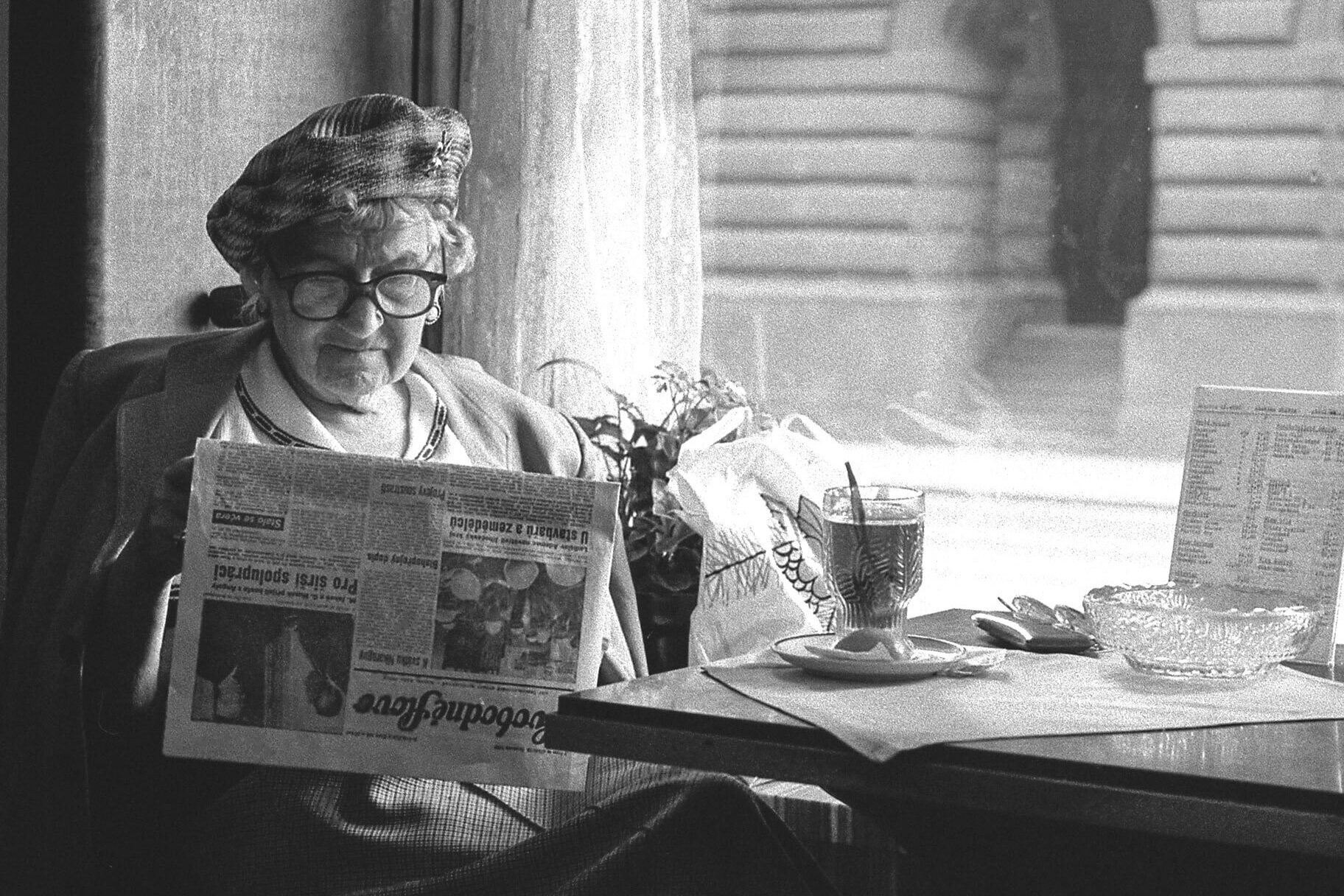Cities Are for Older People, Too
Tiffany Owens is the founder of Cities Decoded and a member of the Strong Towns Advisory Board. This article first appeared on Cities Decoded, and it is republished here (in slightly modified format) with permission. You can connect with Tiffany and Cities Decoded at www.citiesdecoded.org, on Twitter, and on Instagram.
Image via Unsplash.
We’ve all seen them on our Instagram feed: older people photographed in classy outfits, reading a newspaper, sipping a coffee, or walking with their hands folded behind their back. It was not until Europe that I realized how unused I was to seeing older people out in the city. On street after street in Rome, Munich, Madrid, Paris, I saw 70-, 80-year-old citizens participating in daily life: grocery-shopping, riding the metro, shopping with friends. Often dressed snazzier than me, they were fully mobile, fully independent, and fully integrated.
I’ll be honest: I don’t think of getting old when I think about life in the city. I think about being young. I think about budget thrills: street food, dance parties, thrift stores, glasses of whatever is on draft, splitting the rent with roommates, 69-cent toilet tissue, happy hours…brunch. But I think well-designed cities don’t just consider the young and the fast-walking. Well-designed cities take into account all kinds of people. As Queen J so famously wrote:
“Cities have the capability of providing something for everybody, only because, and only when, they are created by everybody.”
Aging in American culture comes with the association of loneliness, dependence, and isolation. If cites were designed differently, this wouldn’t have to be the case. Walkable street design would give them agency and independence, not to mention health benefits. Interacting with other people on a daily, casual basis (grocer, local storekeepers, key-maker) could stave off isolation and loneliness. Dense street design would make it easier for them to access social meet-ups, and being in a city would mean being closer to readily-available services, but also opportunities to participate in society through a job or volunteering.
Image via Unsplash.
The presence of older people in cities would encourage different design priorities. Their watchfulness would help keep streets safe, and their friendship could give us young folks perspective on life. Their presence as pedestrians can remind those of us who are able-bodied to be conscientious and walk/bike/drive more slowly, because we realize the streets are not just for us—as people in the Dutch city of Tilburg have accepted. They’ve introduced an app that can alert streetlights when older people are crossing, so the crossing signals will last longer.
“A sensor in the lights constantly scans the pavement on either side of the junction, and if it “sees” Rommen waiting when the button is pressed it adjusts the green-light time. The app comes pre-installed with one of four time settings, depending on the user’s level of mobility, to minimise delays to other traffic.”
Of course, there are cultural factors to account for here. Older people in Europe may be less lonely because of a strong family culture, so simply surrounding old people in the U.S. with a bunch of strangers probably wouldn’t have the same heart-expanding effect. And the mere presence of older people on a street doesn’t guarantee the presence of businesses to service them. So, most of these design components would only work in conjunction with other design ideas. But even though implementation would be complicated, the idea still has value. Cities done right should make possible for older people a robust existence in which they can live safe, autonomous, and socially-rich lives.
Image via Unsplash.
My case is largely philosophical. Aristotle and Socrates described the purpose of the city as a tool through which humans learn to become fully human. Life in the city isn’t only about commerce, culture, or consumerism. It is about forming the soul through engaging in shared life. They believed that to be fully human, we must facilitate experiences through which we learn to get along with our fellow man. All of them…the young and the old.
Good design in cities makes life possible for a wide variety of people. We need to see children in cities. We need to see families. We need to see steady older people, laborious professionals, and energetic artists. We need to see diverse types of people making it in life and in the city, because it is in witnessing their experiences and learning to exist alongside them that our soul learns how to…be.







When our infrastructure makes normal childhood behavior life-threatening, allowing kids to do typical childhood activities becomes reckless endangerment.